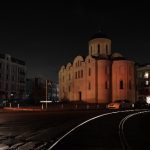 Weird Stuff
Weird Stuff  Weird Stuff
Weird Stuff  History
History 10 Legends Whose Last Moments Undid Their Glory
 Health
Health 10 Futuristic Ideas to Treat Common Medical Problems
 Weird Stuff
Weird Stuff Ten Surreal Attempts to Reverse Baldness
 Facts
Facts 10 U.S. Government Contingency Plans for the Unthinkable
 History
History 10 Weird Distractions from the Great Depression
 Movies and TV
Movies and TV 10 Fictional Kings Who Go from Good to Bad
 Food
Food The Fantastic Chemistry Behind Why 10 Popular Foods Taste So Good
 Technology
Technology 10 Futuristic Fungal Technologies
 History
History 10 Not-so-Spooky Events That Also Happened on October 31
 Weird Stuff
Weird Stuff 10 Things So Rare They’ve Only Been Found Once
 History
History 10 Legends Whose Last Moments Undid Their Glory
 Health
Health 10 Futuristic Ideas to Treat Common Medical Problems
Who's Behind Listverse?

Jamie Frater
Head Editor
Jamie founded Listverse due to an insatiable desire to share fascinating, obscure, and bizarre facts. He has been a guest speaker on numerous national radio and television stations and is a five time published author.
More About Us Weird Stuff
Weird Stuff Ten Surreal Attempts to Reverse Baldness
 Facts
Facts 10 U.S. Government Contingency Plans for the Unthinkable
 History
History 10 Weird Distractions from the Great Depression
 Movies and TV
Movies and TV 10 Fictional Kings Who Go from Good to Bad
 Food
Food The Fantastic Chemistry Behind Why 10 Popular Foods Taste So Good
 Technology
Technology 10 Futuristic Fungal Technologies
 History
History 10 Not-so-Spooky Events That Also Happened on October 31
10 Times Cities Tried to Reinvent Themselves and Failed
Cities are living systems, and like people, they sometimes go through identity crises. Whether chasing new industries, rebuilding reputations, or trying to lure different types of residents, urban reinvention is rarely easy—and often expensive. These cities invested heavily in transformation projects that promised revitalization but instead led to underwhelming returns, public backlash, or economic disappointment.
Here are 10 real attempts at civic reinvention that missed the mark—some dramatically, others just weirdly.
Related: Ten Things That Led to New York City’s Prominence
10 Detroit’s Tech Corridor Gamble
After decades of population decline, mass unemployment, and municipal bankruptcy in 2013, Detroit saw an opportunity to rebrand itself as a Midwestern tech hub. City leaders and local institutions promoted the creation of a “TechTown” district around Wayne State University, modeled loosely on Silicon Valley’s university-adjacent ecosystems. Startup incubators were launched, angel investors were courted, and tech conferences sprouted downtown. The arrival of Dan Gilbert’s Quicken Loans brought energy to the city center, as thousands of employees were relocated, and downtown real estate was snapped up for redevelopment.
But Detroit’s deep systemic issues weren’t solved by tech. While the Midtown area around TechTown showed some life, most neighborhoods—particularly in the east and west sides—remained plagued by crumbling infrastructure, violent crime, and underfunded schools. Critics argued the tech narrative benefited outside investors and white-collar newcomers, not longtime residents. Broadband access was still limited in many parts of the city. Transportation gaps made it difficult for residents without cars to access new opportunities. Despite the optics, Detroit’s “comeback” remained narrow, fragile, and centered on only a few polished blocks of development.[1]
9 Brasília’s Utopian Blueprint
Political ambition and geographic centralization drove Brazil’s decision to move its capital from coastal Rio de Janeiro to the barren highlands. Brasília, inaugurated in 1960, was designed to symbolize a new national future—free from colonial history, centered in the interior, and radiating modernist optimism. The layout resembled an airplane from above, with curved “wings” holding residential zones and a government core packed with monumental buildings by Oscar Niemeyer. Streets lacked names, replaced by codes like “SQS 308” and “CLN 205,” a gesture toward efficient rationality.
But life in Brasília proved stifling and deeply segregated. The design catered to cars, not people. Massive distances separated work from home, making walking impractical and public transit inconvenient. Green spaces were admired from afar but rarely used. Affluent civil servants lived in the pristine center, while lower-income workers were forced into informal settlements outside city limits—far from the promises of utopia. Attempts to fix the social gaps through satellite cities and transit improvements mostly reinforced the original divides. What was hailed as the future of urbanism became a sterile, car-choked monument to misplaced idealism.[2]
8 Las Vegas’s Family-Friendly Rebrand
In the mid-1990s, Las Vegas leaders feared that gambling alone wouldn’t sustain the city long-term. Hoping to broaden its appeal and shed its Sin City reputation, Vegas launched a “family-friendly” campaign. New resorts like MGM Grand and Treasure Island included arcades, roller coasters, pirate shows, and even a Wizard of Oz–themed attraction. Marketing campaigns shifted tone entirely, with slogans like “Las Vegas is for Families” replacing neon seduction with cheerful cartoon mascots. Billions were invested in transforming the Strip into something closer to Disneyland with slot machines.
But the reinvention conflicted with Vegas’s core identity. Tourists didn’t want to bring kids to a city still dominated by gambling, alcohol, and adult entertainment. Attractions like the MGM theme park flopped and were torn down within a decade. Meanwhile, hotel operators found families spent far less than bachelor parties or convention-goers. Crime and adult-oriented businesses never truly disappeared—they just became awkwardly juxtaposed with clown shows and soda fountains. By the 2000s, Las Vegas had reversed course entirely, refocusing on adult luxury, EDM nightlife, and “What Happens Here Stays Here.”[3]
7 New York’s Amazon HQ2 Fiasco
In 2017, Amazon launched a nationwide competition for its second headquarters, triggering an economic arms race among U.S. cities. New York emerged as a winner, securing a major piece of the deal in Long Island City, Queens, with Amazon promising 25,000 jobs and billions in investment. State and city leaders—including then-Governor Andrew Cuomo and Mayor Bill de Blasio—celebrated the victory and offered $3 billion in tax incentives to seal the deal. The project was pitched as a game-changer for NYC’s tech industry, injecting Silicon Valley momentum into a traditionally finance-dominated city.
But the announcement ignited an immediate backlash. Local activists, residents, and elected officials like Alexandria Ocasio-Cortez criticized the lack of community consultation, the use of massive public subsidies, and the expected displacement of low-income residents. Tensions escalated into protests, boycotts, and angry city council hearings. Just three months later, Amazon abruptly withdrew from the project, leaving behind a bitter public debate over corporate favoritism and urban identity. The failed HQ2 push didn’t just expose flaws in economic development policy—it revealed a disconnect between high-level branding efforts and neighborhood realities.[4]
6 St. Louis’s “Arch Renewal” That Didn’t Reach Far Enough
St. Louis, a once-mighty industrial city, hoped that revitalizing its most iconic symbol—the Gateway Arch—could kickstart broader urban renewal. A $380 million plan was launched to upgrade the Arch grounds with new walkways, a museum, bike paths, and a bridge connecting the monument to downtown. The project was framed as a way to reconnect the city’s history to its future, encourage tourism, and reintegrate the waterfront with urban life. In 2015, the new museum and green space opened with fanfare, drawing positive attention and a modest uptick in visitors.
But the transformation was skin-deep. Outside the immediate Arch zone, downtown St. Louis remained marred by vacant buildings, declining retail, and high-profile crime. The new walkways brought in more tourists, but few stayed long or spent money beyond parking and a quick visit. Many locals saw the redevelopment as a distraction from systemic issues—lack of affordable housing, failing public transit, and decades of racial segregation. The polished granite plaza and freshly planted trees did little to address why the city had hollowed out in the first place. The Arch looked better, but St. Louis didn’t feel much different.[5]
5 Dubai’s Cultural Capital Dreams
Known for its towering skyscrapers, indoor ski slopes, and man-made islands, Dubai began a concerted effort in the 2000s to become a global center for art, fashion, and culture—not just business and luxury. The city poured billions into projects like the Dubai Opera, the Art Dubai fair, and the Alserkal Avenue art district. Neighboring Abu Dhabi joined the effort with the Louvre Abu Dhabi and plans for a full cultural district on Saadiyat Island. The UAE positioned itself as a new global arts destination, with elite architecture, international museum partnerships, and government-backed creative initiatives.
But the cultural scene remained tightly curated and lacked the messy spontaneity that fuels real artistic ecosystems. Censorship laws restricted expression, and artists risked arrest for controversial or political work. Most exhibits showcased imported works rather than fostering local experimentation. The audience skewed toward elites and tourists, not residents. Several planned museums were delayed or indefinitely shelved. While the infrastructure dazzled, Dubai’s culture pivot became more about branding prestige than cultivating creative risk, limiting its credibility as a global arts powerhouse.[6]
4 Baltimore’s Inner Harbor Overhaul
In the 1980s, Baltimore tried to shed its image as a declining industrial city by transforming its derelict waterfront into a polished entertainment and tourism hub. The Inner Harbor redevelopment included the National Aquarium, the Harborplace shopping complex, science museums, and a pedestrian-friendly promenade. For a while, the strategy worked—tourism boomed, conventions came, and other cities looked to Baltimore as a model for post-industrial renewal. It was hailed as one of the first successful examples of “urban place-making” through public-private partnerships.
But the wealth didn’t spread far beyond the harbor. Neighborhoods just blocks away remained impoverished and underfunded. Crime persisted, schools struggled, and employment opportunities lagged. The retail-heavy model of Harborplace aged poorly, and by the 2010s, many businesses had closed, and the area began to feel deserted. Baltimore’s reinvention strategy had invested in visitors more than residents. Without meaningful investment in education, housing, or transit, the city’s sleek new harbor was ultimately isolated from the communities it was supposed to lift up.[7]
3 Atlantic City’s Non-Gambling Identity Crisis
When neighboring states legalized casinos, Atlantic City’s once-monopoly on East Coast gambling collapsed. In response, the city launched a rebranding campaign in the early 2010s to position itself as a diversified destination—emphasizing beaches, live music, family attractions, and wellness retreats. The city tried replicating the Vegas model of conventions, entertainment, and food rather than slots and blackjack. High-profile events like the Miss America Pageant returned. The city backed new developments like the $2.4 billion Revel Casino, which featured luxury dining and art galleries meant to attract a wealthier, more refined audience.
But Revel filed for bankruptcy just two years after opening. Efforts to promote family-friendly boardwalk activities failed to draw sustained crowds. Hotels sat half-occupied, and the city’s infrastructure continued to crumble. Crime and poverty remained high, and basic services were underfunded. Atlantic City’s economy was too tied to gambling to pivot easily. While the city kept trying to tell a new story, the old one—built on roulette wheels and crony politics—refused to go away. The reinvention lacked coherence, and no new vision ever really took root.[8]
2 Canberra’s Attempt to Shake Off Its Reputation
Canberra, Australia’s capital city, was created from scratch in 1913 to resolve the rivalry between Sydney and Melbourne. It was designed by American architects Walter and Marion Griffin to be orderly, green, and harmonious, with wide boulevards, concentric circles, and massive green belts. While it succeeded in housing government institutions, it also developed a reputation as soulless, sterile, and devoid of nightlife—a “ghost town” after 5 p.m. In the 2010s, the city launched a rebranding push to change that perception, advertising itself as a center for festivals, craft breweries, outdoor adventure, and public art.
New neighborhoods were developed with mixed-use zoning, bike infrastructure expanded, and food and wine tourism greatly boosted. Events like Enlighten Festival and Spilt Milk music festival were introduced to attract younger crowds. But outside these curated events, the city still struggles with vibrancy. Government workers leave on weekends, nightlife remains tame, and the city’s distance from other major hubs limits its appeal. Critics say the “Cool Canberra” branding feels top-down and manufactured, not emerging from grassroots energy. The infrastructure improved, but the vibe never fully followed.[9]
1 Cleveland’s Medical Tech Bet
Facing post-industrial decline and population loss, Cleveland attempted a high-stakes pivot to become a hub of biomedical innovation. With the Cleveland Clinic already globally respected, the city invested in building the Global Center for Health Innovation, a high-tech exhibition hall attached to the city’s convention center. It was marketed as a “permanent trade show” for the healthcare industry—where companies would display products and strike deals in a constant churn of innovation. Politicians called it a “game-changer” and predicted thousands of jobs.
But the space was mostly empty from the beginning. Leasing targets weren’t met. Major tenants left after disappointing foot traffic. Critics said the business model was flawed from the start—few healthcare companies were interested in renting permanent booths, and medical buyers don’t make impulse purchases in convention centers. By 2020, the facility was shuttered and repurposed for pandemic overflow. Cleveland’s broader transformation efforts—tied to gentrification, sports stadiums, and high-end developments—didn’t address crumbling schools or entrenched poverty. The medical tech pivot looked visionary on paper but fell flat when confronted with the real economics of urban change.[10]








